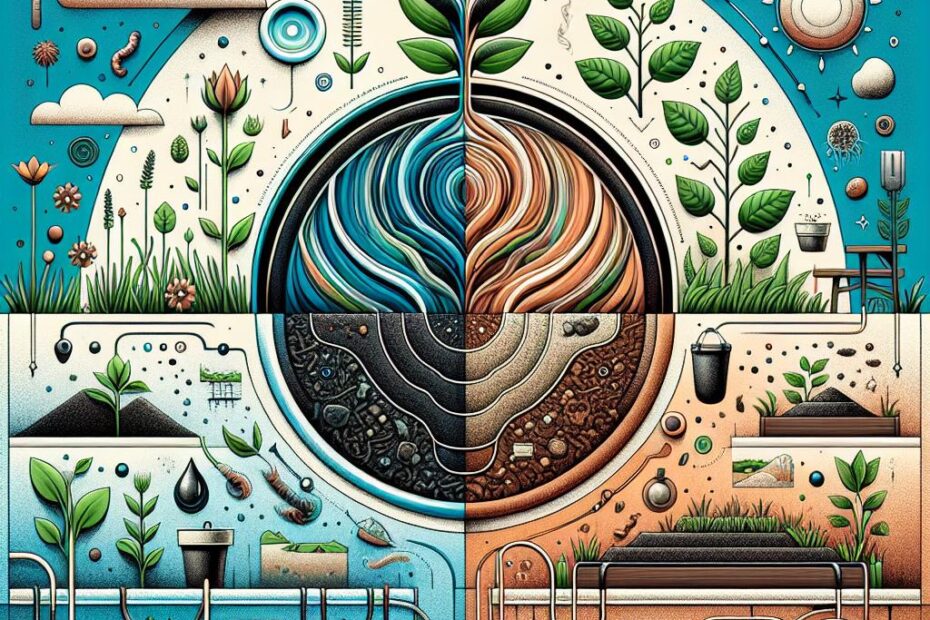In-Ground vs Raised Bed Soil: Which is Best for Your Garden?
When it comes to gardening, one of the key decisions you’ll need to make is whether to plant your crops in the ground or in raised beds. Both options have their pros and cons, and the soil you choose to use can make a big difference in the success of your garden. In this article, we will discuss the differences between in-ground soil and raised bed soil, the benefits of each, and provide practical tips for making the best choice for your garden.
In-Ground Soil
In-ground soil is the natural soil that is already present in your garden. It is what most people think of when they picture a traditional garden. Here are some key points to consider when using in-ground soil:
- In-ground soil can vary greatly in quality depending on your location. Some soils may be rich and fertile, while others may be poor and lacking in nutrients.
- In-ground soil may have drainage issues, which can lead to waterlogged roots and rotting plants.
- In-ground soil can be difficult to amend and improve, especially if it is heavy clay or sandy soil.
Raised Bed Soil
Raised bed soil is specially formulated to provide optimal growing conditions for your plants. Here are some benefits of using raised bed soil:
- Raised bed soil is typically a mix of topsoil, compost, and other organic matter, which helps to create a nutrient-rich environment for your plants.
- Raised beds provide better drainage than in-ground soil, which can help prevent waterlogging and root rot.
- Raised beds can be filled with a custom soil mix that is tailored to the specific needs of your plants, making it easier to grow a wide variety of crops.
- Raised beds can be placed on top of existing soil, which is particularly useful if your in-ground soil is of poor quality.
Benefits and Practical Tips
Now that we’ve discussed the differences between in-ground soil and raised bed soil, let’s take a look at some benefits and practical tips for using each:
In-Ground Soil Benefits:
- Cost-effective, as you don’t need to purchase additional soil.
- Can be beneficial for certain plants that thrive in native soil.
- Can be improved over time with proper amendments and care.
In-Ground Soil Practical Tips:
- Test your soil before planting to determine nutrient levels and pH.
- Amend your soil as needed with compost, organic matter, and other soil additives.
- Consider building raised beds in areas with poor soil quality.
Raised Bed Soil Benefits:
- Provides optimal growing conditions for a wide range of plants.
- Easier to control soil quality and fertility.
- Can be placed on any surface, making them ideal for small spaces or urban gardens.
Raised Bed Soil Practical Tips:
- Use a mix of topsoil, compost, and other organic matter to create a nutrient-rich soil mix.
- Consider adding a layer of mulch to help retain moisture and suppress weeds.
- Rotate crops each season to prevent nutrient depletion and pest infestations.
Case Studies
To better understand the benefits of in-ground vs raised bed soil, let’s take a look at two case studies:
Case Study 1: In-Ground Soil
Sarah has a large backyard with fertile in-ground soil. She decides to plant her vegetable garden directly in the ground, as she wants to take advantage of the natural soil nutrients. Although she has some issues with drainage, she amends her soil with compost and mulch to improve the structure. Her garden thrives, and she enjoys a bountiful harvest of tomatoes, cucumbers, and peppers.
Case Study 2: Raised Bed Soil
John lives in an urban apartment with limited outdoor space. He builds raised beds on his balcony and fills them with a custom soil mix consisting of topsoil, compost, and perlite. Despite the small space, John is able to grow a variety of herbs, salad greens, and strawberries in his raised beds. The controlled soil quality and efficient drainage help his plants flourish.
First-Hand Experience
As a seasoned gardener, I have had experience with both in-ground and raised bed soil. I have found that raised beds are particularly useful in areas with poor soil quality, as they allow me to create a customized soil mix that meets the specific needs of my plants. Raised beds also provide better drainage, which has helped prevent root rot and other water-related issues in my garden. However, I still enjoy planting directly in the ground for certain crops that thrive in native soil conditions. In the end, the best choice will depend on your specific gardening goals and the conditions of your garden.
In conclusion, the decision to use in-ground soil or raised bed soil in your garden will depend on factors such as soil quality, drainage, space constraints, and personal preference. Both options have their advantages and can be successful with proper care and maintenance. Whether you choose to plant in the ground or in raised beds, be sure to provide your plants with the nutrients, water, and sunlight they need to thrive. Happy gardening!
